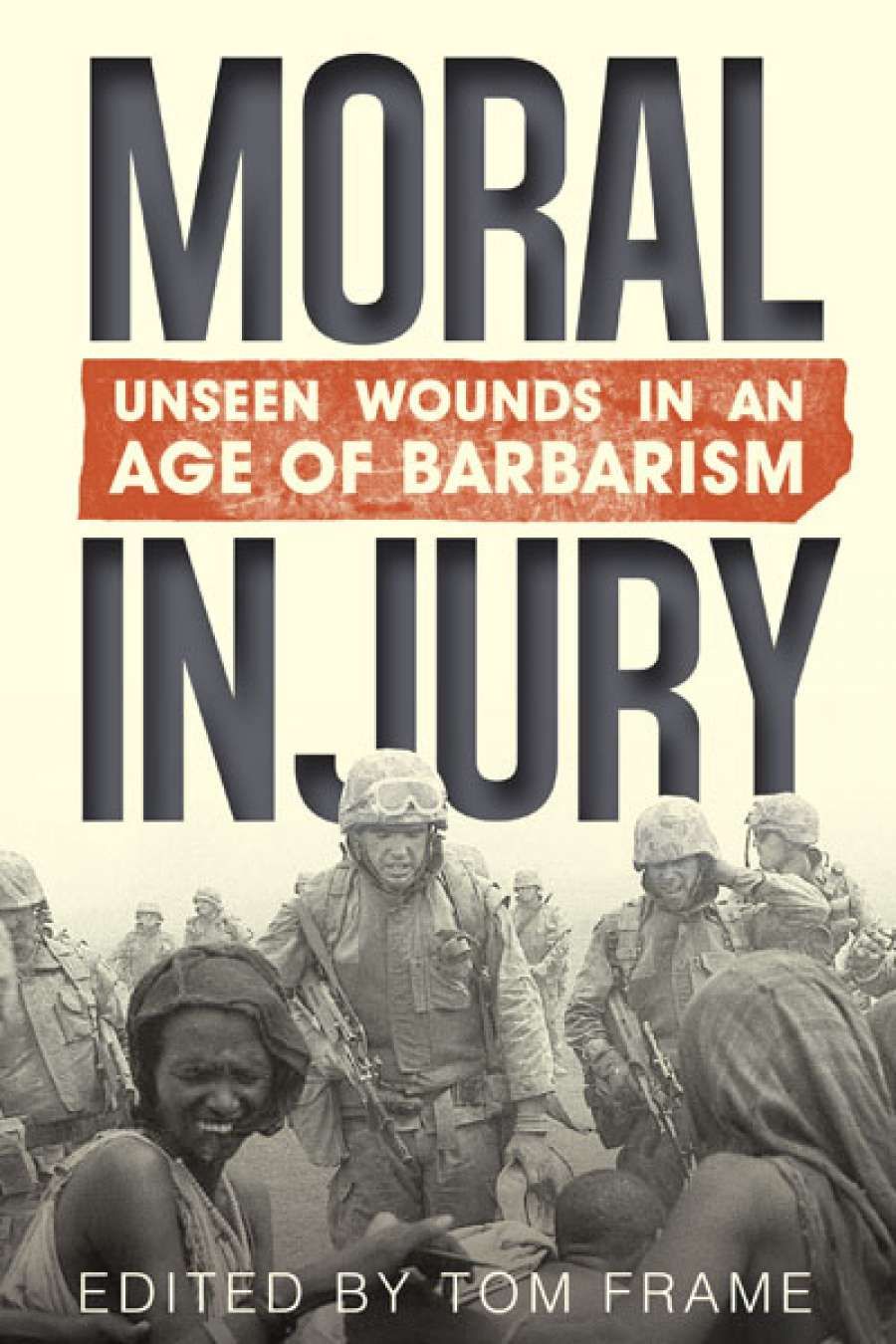
- Free Article: No
- Contents Category: Philosophy
- Custom Article Title: Damian Cox reviews 'Moral Injury' edited by Tom Frame
- Book 1 Title: Moral Injury
- Book 1 Subtitle: Unseen Wounds in an age of barbarism
- Book 1 Biblio: UNSW Press, $39.99 hb, 293 pp, 9781742234656
From the calm and peace of civilian life, it is tempting to say that the man's judgement of his moral culpability is wrong. He could have saved lives, but he was not really to know this. It seems that he could only have saved the lives by acting unprofessionally. He was aware of the weakness of the Afghan command structure and the ill-discipline of Afghan troops, but he was not ultimately responsible for their failures; nor was he morally required to compensate for their failures by pressing his own weary troops to unwise excess. It is sometimes easy to judge culpability from a distance, but this is not how moral experience works. In hindsight, we are liable to see our own agency in exaggerated terms: we focus on counterfactuals that impute blame – there is so much more we think we could have done, given what has happened – and underplay the significance of chance and the moral responsibility of others. As Rhiannon Neilsen makes clear in her contribution to the volume, it is the perception of moral culpability that causes suffering in cases like this, not necessarily the reality of it.
'How does moral harm differ from psychological harm?'
From a theoretical perspective, the key question is whether moral injury is distinct from post-traumatic stress disorder. The latter is widely known and much discussed, but its psychological diagnosis and treatment have fluctuated over the years. Moral injury might best be categorised as a form of post-traumatic stress disorder. But as some philosophers in this volume – Matthew Beard, Ned Dobos, and Rhiannon Neilsen – point out, there exists the conceptual space for different ways of understanding moral injury. It seems clear that there is not one thing called moral injury, but several. One sort of moral injury involves harm to one's moral capacities. In his contribution, Dobos calls this moral degradation. Another sort of moral injury involves persistent trauma caused by moral experience. If it is caused by one's own perceived wrongdoing, Dobos calls it moral trauma. If it is caused by an experience of the wrongdoing of others, or a perception of having been betrayed by colleagues, commanders, or political masters, it is perhaps best considered a special kind of post-traumatic stress disorder.
'From the calm and peace of civilian life, it is tempting to say that the man's judgement of his moral culpability is wrong'
From a practical perspective, the key issues are whether treatment and prevention of moral injury should differ from treatment and prevention of post-traumatic stress disorder, whether non-clinicians such as chaplains should play a role in the treatment of moral injury, and, crucially, whether treatment options developed in the United States should be adopted uncritically in an Australian context. Australian experience of combat differs markedly from that of US soldiers, as Rob Sutherland argues in his contribution to the book. Andrea Phelps and colleagues demonstrate in their contribution just how hard it is to establish an empirical basis for different diagnostic and treatment options.
Psychologist contributors sometimes struggle to emerge from their jargon-laden cocoon, but otherwise this is a very engaging read. It is just the collection to frame serious study of the moral harms of contemporary combat, especially from an Australian perspective.


Comments powered by CComment